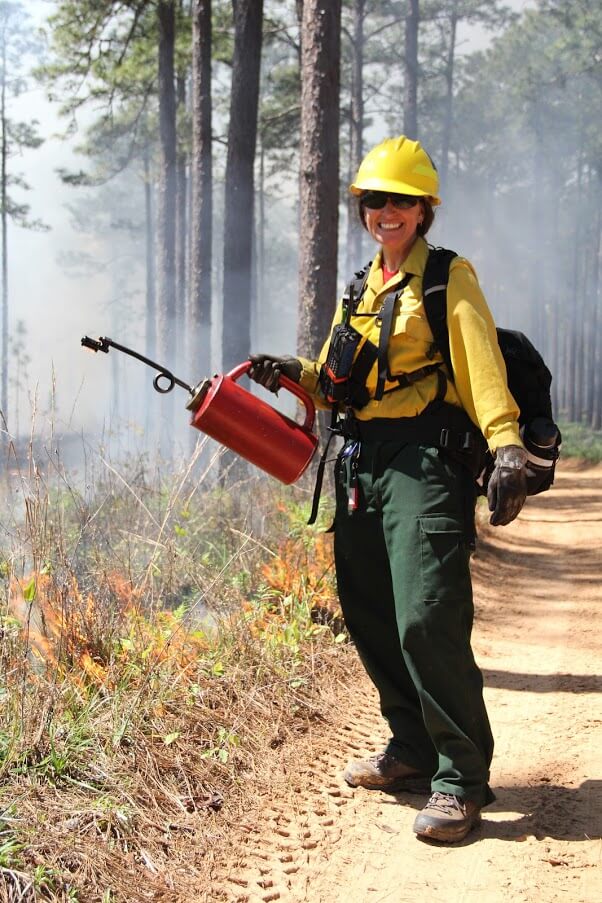FIRE MANAGEMENT
SUPPORTING PRESCRIBED BURN ASSOCIATIONS
BY DYLAN BRUCE

As an essential part of the modern fire-management toolkit, prescribed burning needs community involvement and co-ordination to achieve its best results.
One initiative working to organize community efforts and resources for prescribed burning is Prescribed Burn Associations (PBAs), which are Jennifer Fawcett’s field of expertise.
Fawcett is an extension associate at North Carolina State University and works closely with PBAs.
PBAs are community organizations led by private landowners to share knowledge, equipment, and resources with each other; they are then able to co-ordinate and co-operate to carry out prescribed burns on each other’s land.
“PBAs are rapidly increasing across the U.S., especially in the south-east and in states such as California,” says Fawcett.
“PBAs have successfully increased prescribed fire use by landowners and land managers, mainly by making it easier and safer to use.
In 2020 alone, Fawcett says, one PBA in North Carolina safely conducted 48 burns on 4,600 acres and has a membership of more than 300 people.
“Much of my research in 2022 will be focused on identifying educational needs and opportunities for members of PBAs.”
Fawcett lives in Raleigh, which faces the unique challenge of having the highest Wildland Urban Interface (WUI) number in the United States. WUI measures areas where the landscape transitions between wilderness and human-developed land.
North Carolina’s high WUI number presents a challenge to fire managers, as any prescribed burn may impact homes, roads, farms, and other developments.
Fawcett discovered her interested in fire management while completing her master’s degree in forest resources at Clemson University in South Carolina.
“When I started my master’s degree I had never been on a wildfire or seen a prescribed burn” says Fawcett.
After being invited to join some prescribed burns early in this degree, Fawcett developed an interest in the area.
“All of the planning and thought that went into each burn, combined with the effects of the fire on the landscape was fascinating to me.”
Fawcett is also the co-ordinator of the Southeast Regional Partnership for Planning and Sustainability (SERPPAS) Prescribed Fire Work Group, a six-state partnership of state and federal agencies that promotes collaboration in making resource-use decisions.
Supporting national defence, conservation of natural resources, and sustainable working lands and communities, SERPPAS functions to build relationships among a range of partners.
Fawcett’s responsibility is to co-ordinate the prescribed fire working group and ensure members meet the prescribed fire-related needs of the region.
“I also get to conduct education and outreach programs with private landowners and others on topics related to prescribed fire,” says Fawcett.
She began her career as an ecologist with a degree in animal science, conducting wildlife surveys in southwest Florida.
“Growing up, I always had an interest in the outdoors. My mom would catch me playing with frogs or turtles or whatever animal or insect I found in our backyard,” says Fawcett.
“In this ecologist role I noticed the role of fire in the ecosystem, and I became very interested in learning more about disturbance ecology.”
While completing her masters, Fawcett studied the effects of a Southern Pine Beetle outbreak, and then worked briefly for the US Forest Service researching longleaf pine ecosystems.
Fawcett is completing a doctorate in education, exploring educational needs of Prescribed Burn Association members.
